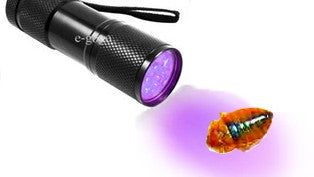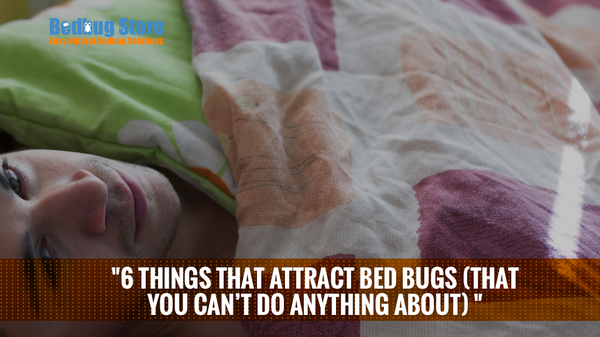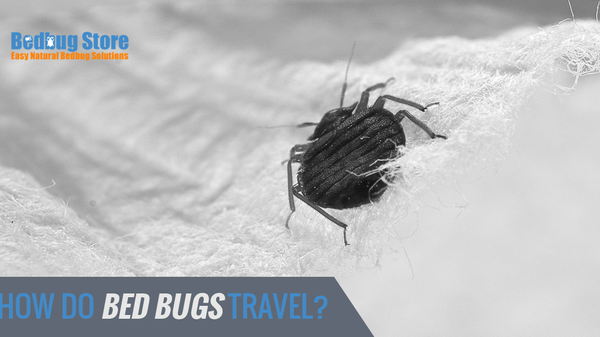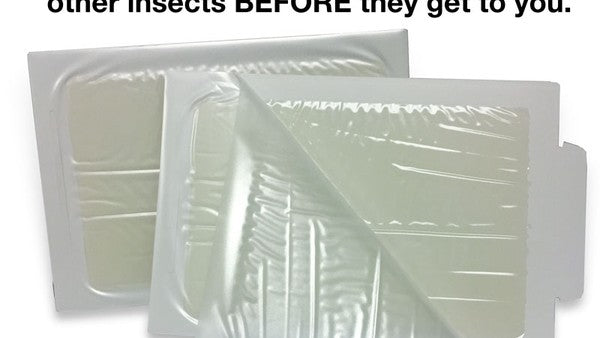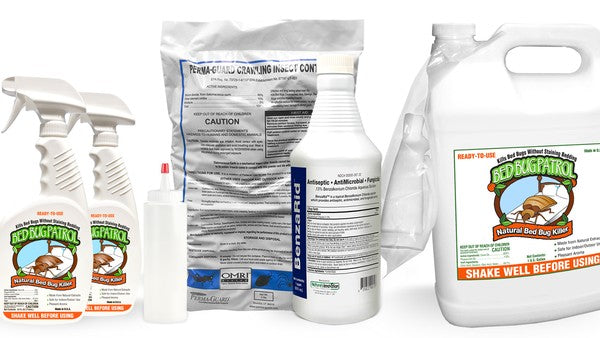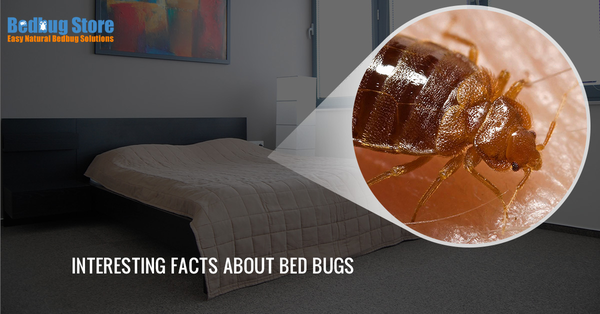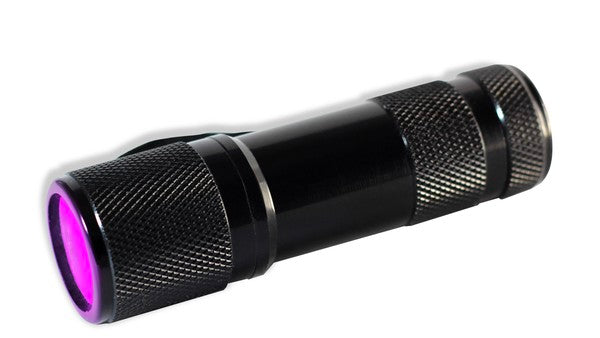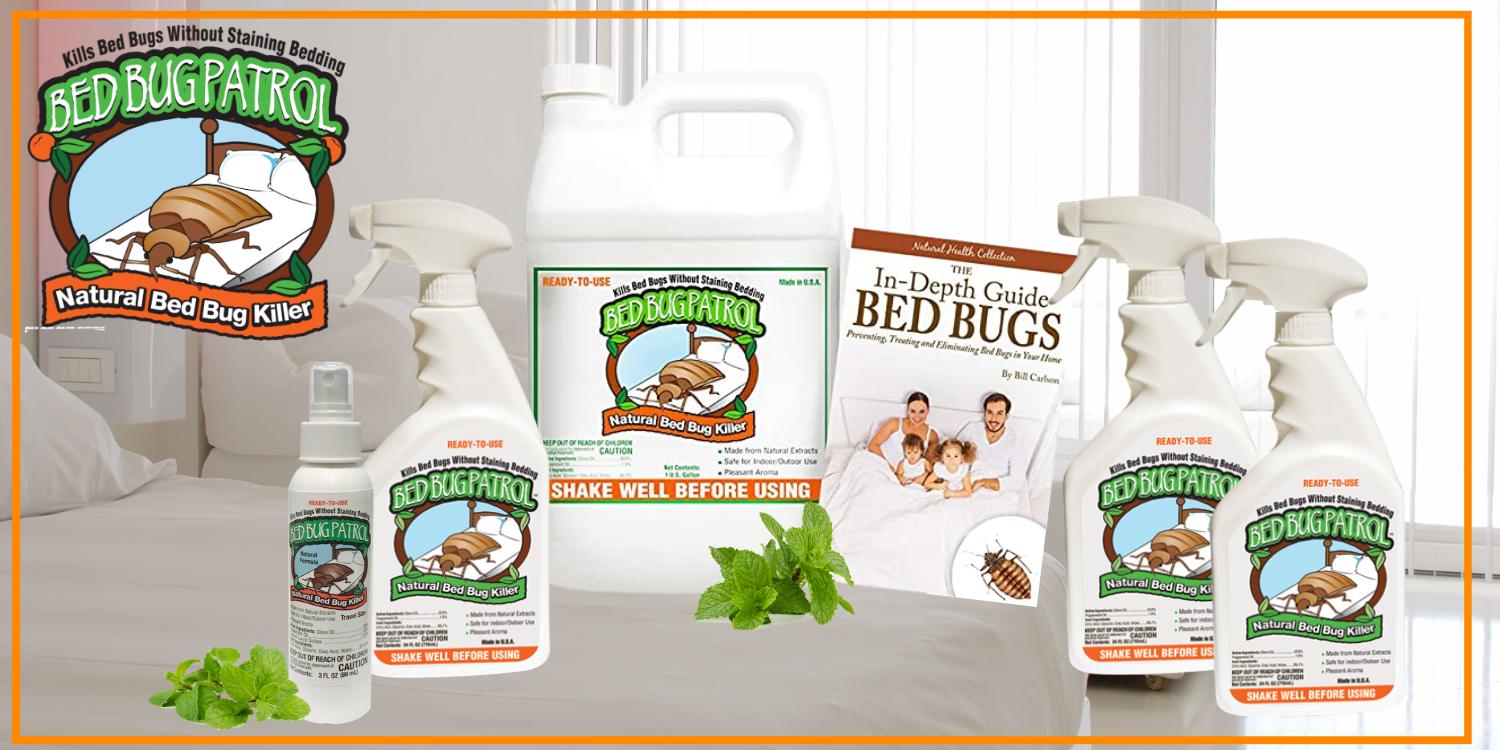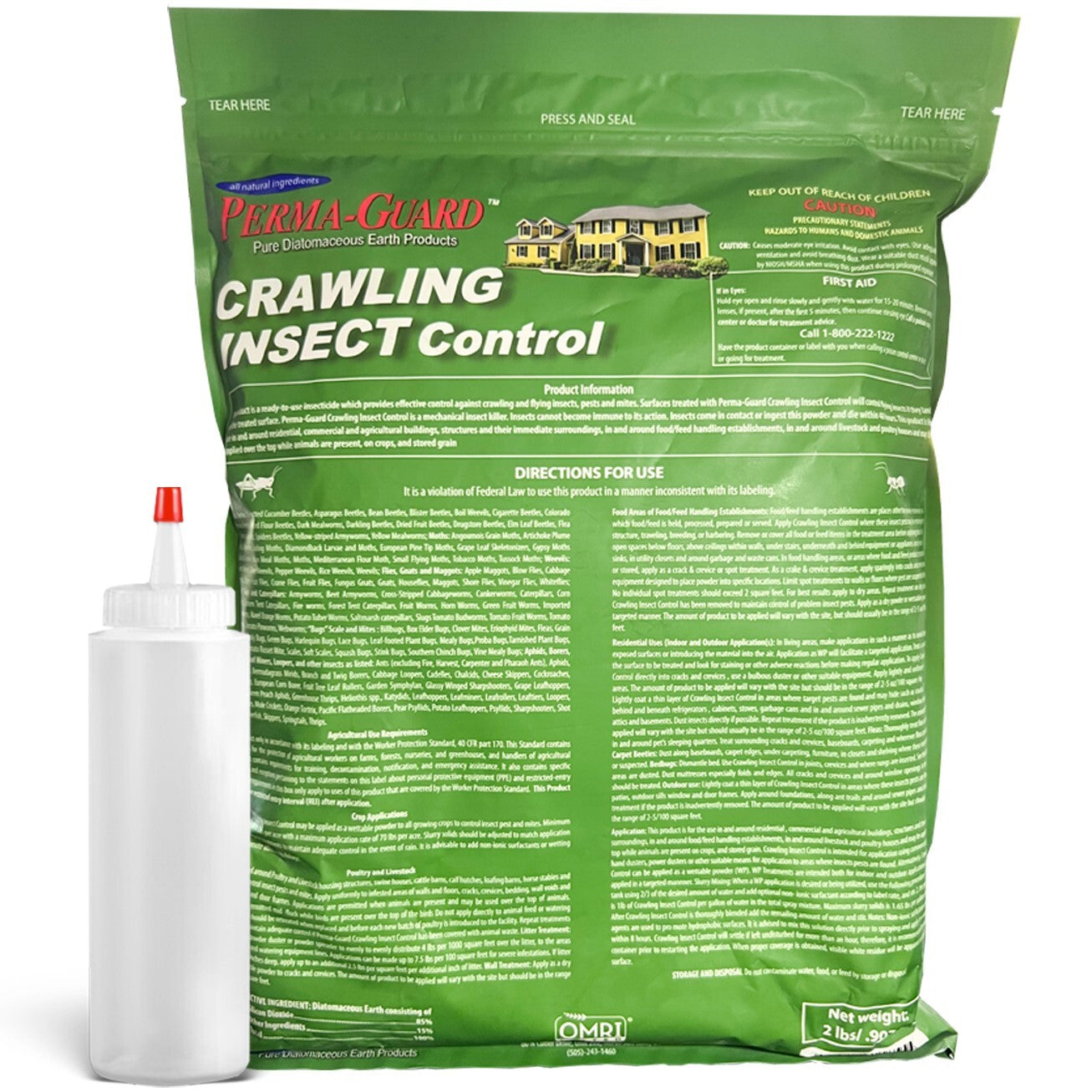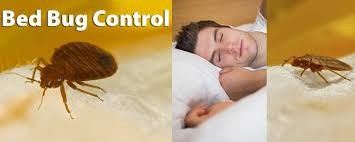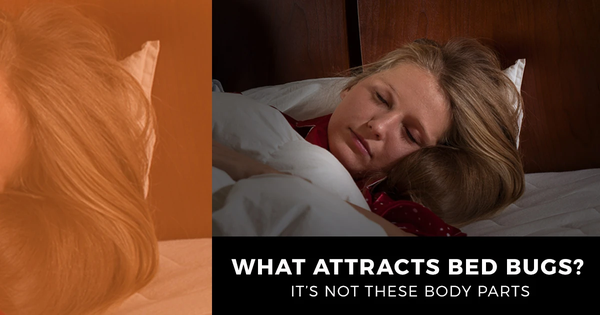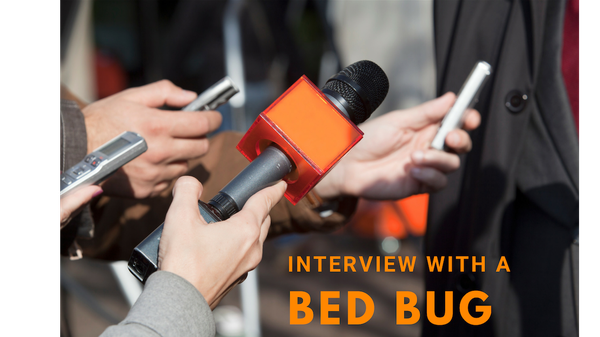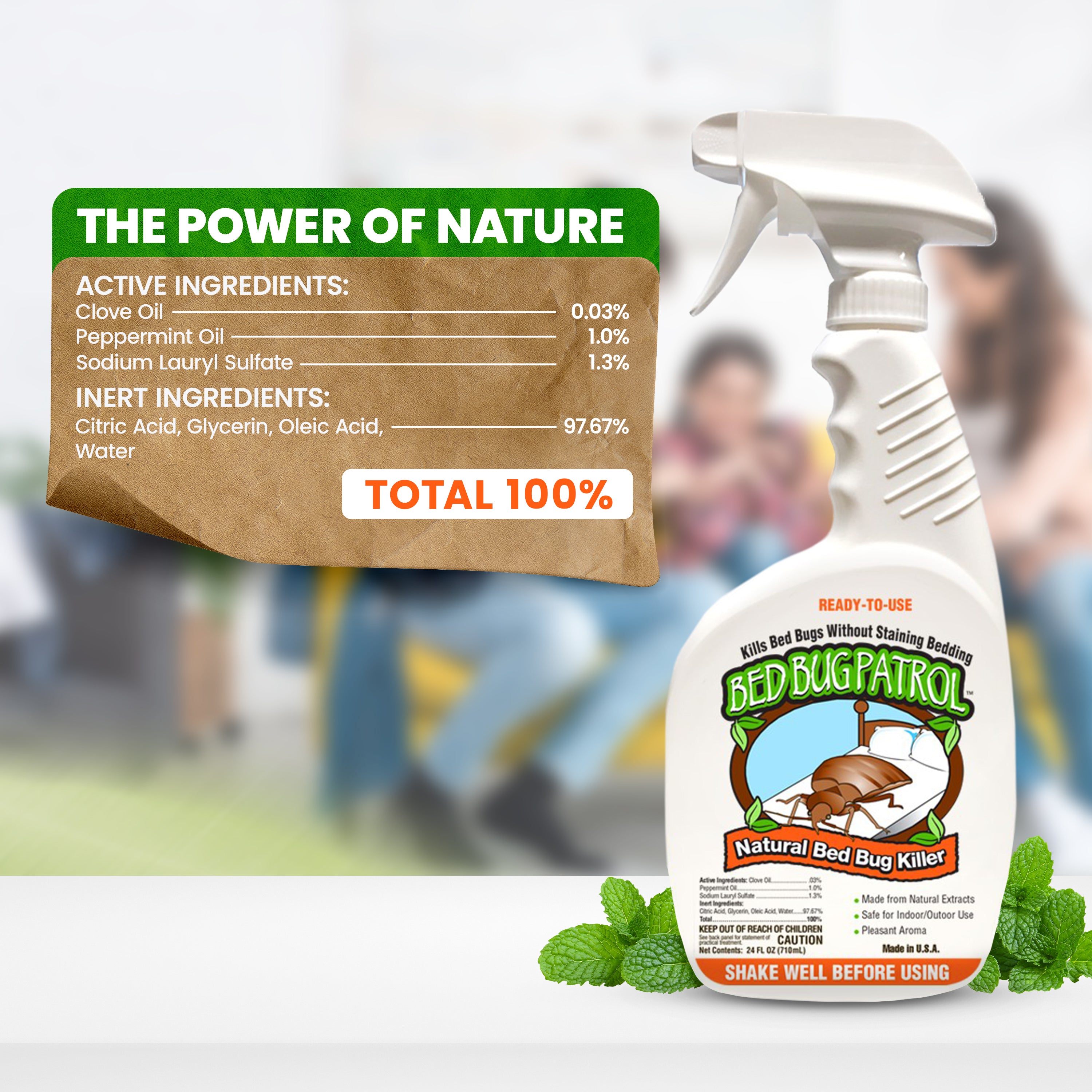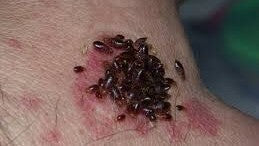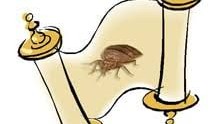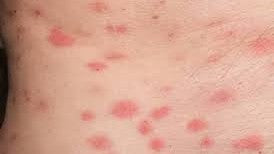Chemicals You Won't Find in Our Bed Bug Killer Sprays
Alana Korol
July 2, 2019
In our most recent article, we discussed the many reasons not to use a bug spray, such as Raid, for your bed bug problem.
While it might kill the few bed bugs that you can actually see, it doesn't last long enough to kill those that are hiding (which is most of them). It's also possible that Raid won't work on bed bugs because it is typically made for bugs—such as ants and roaches—whose physiology is considerably different from the average bed bug's.
Of course, Raid also smells horrible, reminding you that you shouldn't consume it indoors—and certainly not in a place where you'll be for eight hours a night.
But you should not worry just about the smell. While our Bed Bug Patrol is an eco-friendly, plant-based bed bug killer, Raid isn’t natural. In fact, there aren’t many bed bug sprays out there that don’t contain dangerous chemicals. Today, we’ll examine some of the toxic chemicals you’ll find in many off-the-shelf bed bug sprays—Raid and otherwise—that you should avoid when you’re looking for a bed bug solution.
Cyfluthrin interferes with the sodium and potassium ion channels in nerves, which is its primary means of killing insects. Unfortunately, it can also have the same effect on humans at larger doses, causing muscle trembling, behavioral changes, and loss of coordination.
Cyfluthrin is also bad for the environment and is shown to be dangerous to aquatic life and honeybees.
Permethrin is an insecticide that kills bugs by blocking sodium ion channels. It’s used worldwide as a pesticide on crops but is also found in bug sprays, bug-resistant clothing, and mosquito nets.
Permethrin is the most common chemical used in bed bug sprays, such as Harris Bed Bug Spray (a bed bug solution we wrote about here). Unfortunately, it seldom works for users of that product! Here’s why:
“Two mutations, the valine to leucine mutation (V419L) and the leucine to isoleucine mutation (L925I) in voltage-gated sodium channel α-subunit gene, have been identified as responsible for knockdown resistance to deltamethrin in bed bugs. One study found that 88% of bed bug populations in the US had at least one of the two mutations, if not both, meaning that deltamethrin resistance among bed bugs is currently making this insecticide obsolete.”
Eighty-eight percent of bed bugs are immune to permethrin, but bed bug sprays keep putting it in because it sometimes works. (And because people often lose receipts and can’t take the mostly worthless stuff back to the store, apparently.)
At high levels, permethrin can cause seizures, problems with motor skills, and the death of brain cells. Like cyfluthrin, permethrin is harmful to bees and fish.
Pyrethroids aren’t just a single chemical but a group of chemicals that act in a similar fashion. The most common individual chemicals you might see are metofluthrin, prallethrin, tetramethrin, phenothrin, dl-trans allethrin, and lambda-cyhalothrin.
What’s so bad about pyrethroids? They are lipophilic, meaning that they are easily absorbed into fat cells. This means that they can be stored in the body for long periods, and our body has a hard time breaking them down and/or excreting them. They can also cross the blood-brain barrier, which allows them to mess with our nervous system.
Pyrethroids have been shown to cause problems with breathing, often producing asthma-like symptoms. On the skin, they can cause burning and itching. Because they can affect the brain, they can also affect coordination. Infants are the most susceptible to such problems.
DEET is the most common insect repellent worldwide. It stands for diethyltoluamide and has been used for over 40 years.
The critical thing to remember is that DEET is an insect repellent, not an insect killer. It’s primarily used to repel mosquitoes and ticks. Some sprays might use it as a bed bug repellent, which would be silly because you’d have to keep reapplying it to the mattress. Since bed bugs can live for six months or more without eating, repelling them isn’t what you should be doing. You want an effective bed bug killer!
The problems associated with DEET are most often associated with using it in large quantities. DEET can cause skin irritation and blisters. It is easily absorbed through the skin and can get into the bloodstream. It is considered a neurotoxin, so headaches are not uncommon with its use. In the largest amounts, it can cause seizures and memory loss.
DEET has its place in the world. There are certain situations where the option of using DEET is much better than the alternative. For instance, using DEET to ward off mosquitoes carrying the West Nile virus or malaria is better than getting either of those diseases.
Repelling ticks is crucial if you’re in the woods and fear Lyme disease. But if you can avoid it and use an effective natural repellent instead, we’d suggest doing so.
What Can You Do?
As you can see, synthetic chemicals can cause many problems, whether in your outdoor bug spray or a bed bug spray you use on a mattress. They can cause a wide range of issues in the human body, starting with breathing problems and moving onto the burned skin.
Once they get into the bloodstream, they move throughout the body, often crossing the blood-brain barrier, and then show exactly why they’re called neurotoxins. They’re also bad for the environment.
What can you do? It would be best to look for a natural, eco-friendly, non-toxic bed bug killer that kills the bed bugs and is safe to use in your home. There aren’t many bed bug sprays for mattresses that are actually safe to use, but we’re happy to let you know that our bed bug solution uses ingredients that are only dangerous to insects and not to humans.
Let us at Bedbug Store assist you. Our products come with a 90-day, 100% satisfaction guarantee. Since 2003, We have been relieving customers of their bed bugs. Our products are also 100% all-natural, chemical, and pesticide-free. The smell you notice when using our solution is the fresh scent of peppermint.




